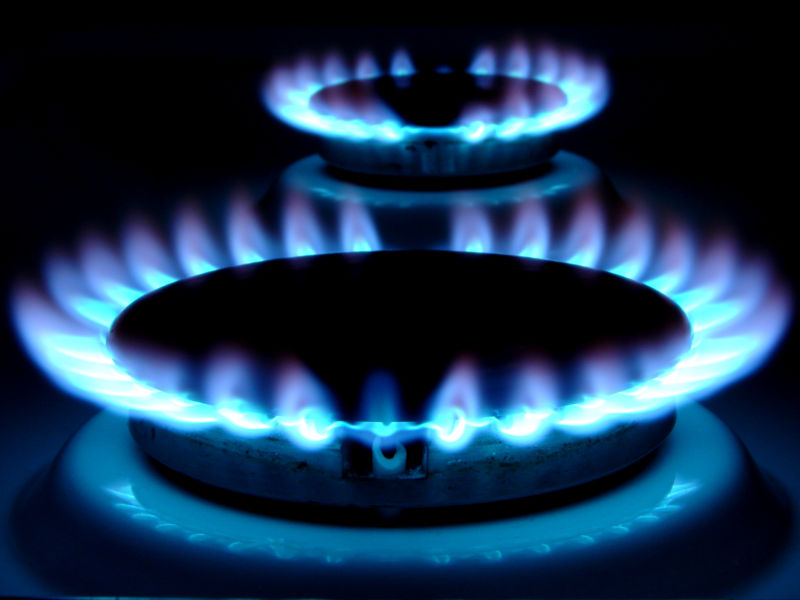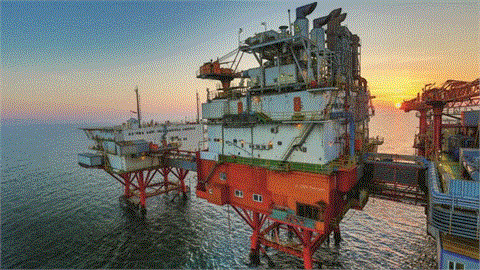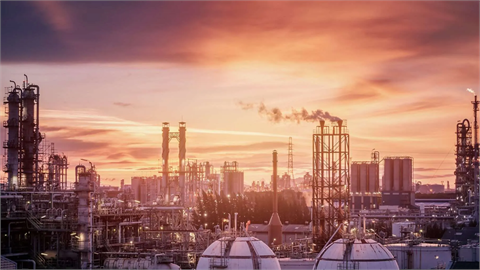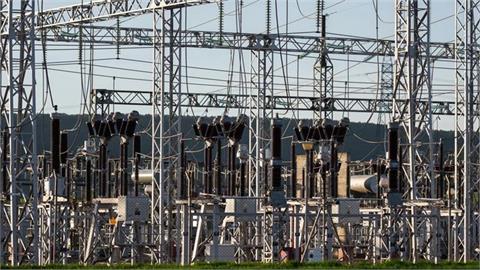For roughly its first two decades of existence, Standard Oil wasn't really an oil company—at least, not in the way most people think today. Until the late 1880s, John D. Rockefeller's behemoth didn't bother owning oil fields. Standard was all about refining and distribution, the keys to building the markets that would ultimately take the oil
For roughly its first two decades of existence, Standard Oil wasn't really an oil company—at least, not in the way most people think today.
Until the late 1880s, John D. Rockefeller's behemoth didn't bother owning oil fields. Standard was all about refining and distribution, the keys to building the markets that would ultimately take the oil.
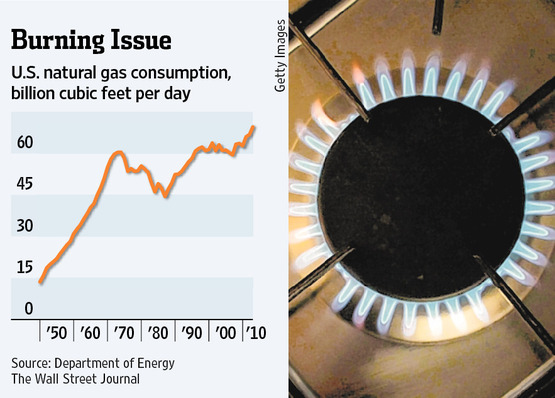
More than a century later, there are lessons from this for the natural-gas business. Rising gas supply has surprised the U.S. Exxon Mobil and several partners built Texas's Golden Pass liquefied natural gas, or LNG, import terminal expecting domestic gas output to keep falling. But it began operations in 2010—the same year Exxon showed it recognized that shale gas had changed the game entirely by paying $41 billion for domestic producer XTO Energy.
Gas isn't a new fuel. The U.S. used almost 70 billion cubic feet, or bcf, a day last year. But while that was up 15% from 2005, domestic-gas output jumped by a third in that same period. Some estimate a century's worth of gas lies beneath U.S. soil. Curbing supply, the exploration-and-production industry's typical defense for prices, offers some support. But who will bid high when there is so much gas in the ground?
What's needed is more use of gas. Low prices have helped boost its share of U.S. power generation. But this is very price sensitive, and the recent move by gas above $4 per million British thermal units has already helped coal win back some ground.
The big prize is fostering new markets, such as selling more gas overseas. Exxon now wants Golden Pass to export LNG. Navigant Consulting estimates U.S. LNG exports could ultimately reach five or six bcf a day, equivalent to an extra 7% to 9% of demand.
A bigger target is transport. Last year, the U.S. burned 12.4 million barrels a day of gasoline and distillate. If gas could replace even half of that, it would boost demand by 37 bcf a day, or more than 50%. Even that is a very tall order, though. Sanford C. Bernstein points out that natural-gas vehicles make up less than 0.1% of the U.S. vehicle fleet. And the history of hybrid-electric vehicles suggests adoption of new technologies takes many years.
Trucks and trains are good candidates for gas conversion, as their predictable routes make refueling easier. Switching costs would still be high, though. While Berkshire Hathaway's BNSF Railway plans to test replacing diesel with gas, the largest railways consume just 3.8 billion gallons of diesel a year, according to Bernstein. Displace all of that, and it would mean extra demand of 1.5 bcf of gas a day—helpful, but hardly a game-changer.
While abundance and lower emissions favor gas, creating those new markets requires big upfront investment and patience—not something for which the often cash-strapped E&P sector is well-suited.
So despite seeing its stock suffer since the XTO deal, Exxon, and other oil majors, are the natural vehicles to expand the reach of gas. They have the money to invest in refueling stations and other infrastructure. And, with integrated operations to produce, transport and use gas, they can capture profits at various points along the value chain, mitigating price weakness at the well. They also have lobbying clout, which could help secure permission to export LNG and subsidies to encourage consumers switching to gas.
The majors' strength offers some hope for E&P firms. As Big Oil invests more in a gas-fired future, it will seek high-quality reserves. And despite big deals like that for XTO, consolidation has barely begun. The top 10 gas producers accounted for about 30% of U.S. output in the fourth quarter of 2012, the same proportion as in 2007.
It is a curious turn of fate that Standard Oil's biggest descendant, Exxon, looks set to perform a similar role in the burgeoning age of gas.
A Bright Future for LPG and LNG Shipping
Energy is an integral part of shipping. Today, almost 2/3 of energy fuels such as crude oil and oil products, LNG, LPG hard and steam coal, iron ore and uranium rods are all transported by sea and contribute to the global economic and social development. Maritime transportation is a very significant constituent of world economy. It offers economies of scale and sustainable and efficient trade functioning, on global scale. Without maritime transportation of energy products, industrialized countries economies would be hindered from properly functioning.
Nevertheless global shipping volumes as a whole fell in 2012 as Europe's economic difficulties continued to act as a burden on demand, according to latest trade statistics reports. As the global economic recovery remains weak and uncertain, it seems that 2013 is likely to remain tough for shippers. The growing oversupply of vessels continues to depress freight rates across the tanker market and no improvement is expected for 2013, the Danish Ship Finance institute observed in its latest review of the shipping market.
Although timecharter rates in the oil tankers sector have grown to USD 22,000 (EUR 17,000) per day from USD 19,000 per day in the first eight months of 2012, the monthly average is still 14% below the previous low, recorded in 2002. The report predicts that freight rates will remain depressed in 2013 despite the expected slowdown in the oil tanker supply growth. Fleet utilization and earnings are likely to remain low unless a rebound in the global economy boosts oil demand.
As regards product tankers, the market is also unlikely to recover in 2013 due to unfavourable economic conditions and the overall decline in the demand for oil products. Rates are still depressed by the oversupply of vessels that characterized the past few years and are expected to remain so during the next year. In the market for chemical tankers, the combination of a growing Chinese demand and the expected stabilization of overcapacity fuel certain amount of optimism. The global chemical tanker fleet is expected to grow by 3% in 2012, while distance-adjusted demand is also likely to grow by 3%. This fragile balance is likely to support more stable freight rates and asset values until the end of 2012 and throughout 2013 according to the report.
Similarly, 2011 was also a difficult year for the tanker freight market. Modest demand growth and continuous oversupply characterized the global market. The slow economic growth compared with the bunker prices almost reaching previous record levels contributed to make 2011 another severely difficult year for the tanker sector. Earnings for crude tankers declined further in 2011 from already unhealthy levels. At the same time the order boom of the past years was put pressure on the rates. The actual order book for tankers equates 30 per cent of the active fleet for oil tankers and 70 per cent for gas tankers.
The total tanker fleet capacity continued its steady growth with a 4.5 percent increase in 2011. The order book, however shrunk from 125 million dwt to 83 million dwt, so fleet growth is set to slow down over the next years.
On the other hand at the beginning of 2012 the total tanker fleet comprised 12.902 tankers totaling 547 million dwt thereof 10.194 oil tankers and oil products tankers with 497 million dwt, 1.144 chemical tankers (6.2 million dwt) and 1.564 liquid gas tankers (44 million dwt). During 2011 a total of 640 new tankers with 44.6 million dwt were delivered nearly the same volume as in 2010. Looking at the period 2008 – 2012 the total tanker fleet tonnage increased on average by 5.7% per year.
According to most observes the only bright light in the tanker shipping sector is LPG and LNG tankers. Andrew Buckland, LNG shipping analyst at Wood Mackenzie, the consultancy, believes the marine LNG market has the potential to be "a big market”. The global marine bunker fuel market uses about 250m tonnes a year today and is currently supplied mainly by fuel oil.
Strong demand from Asia and growing exports from the Middle East kept the market afloat during 2012. The lower LPG prices are also prompting a growing number of importers to build up their stocks, thus boosting demand for LPG tankers. The combination of strong demand and the limited growth of the LPG tanker fleet continued to boost charter rates to an average of USD 930,000 per month in August 2012 from USD 830,000 in December 2011. In 2013, rates are expected to remain strong as demand for LPG tankers would exceed supply.
Particularly, transportation of gas is a rising significantly and shows good prospects for further development, resulting in new related shipping investments. According to the predictions of shipping index analysts, increases in LPG transportation for instance and in the total transport capability of LPG carriers are forecast, by 4,7% in 2013 and 4,9% in 2014 and the transport capability of LPG carriers increased by 1,7% last year. As far as LNG is concerned, LNG imports continue to play a significant role throughout the European Union -despite the economic recession in the eurozone- as a result of new gas infrastructure investments, terminals and pipelines, new gas-fired power units, as well as increased penetration of natural gas in the domestic and commercial building markets.
On the other hand coal transported by sea increased from about 5%of in 1980 to 14% of world consumption in 2011. This indicates that more and more of the coal consumed is imported by sea from other destinations. The average distances shipped though appeared to be somewhat smaller having been reduced to4.800 miles in 2011 from 5.100 in 1980. This is due to the emerging Asian economies importing more from sources closer to them. However, with ever increasing demand this distance will probably increase.
Regarding LNG shipping transportation, small and mid scale LNG and CNG technology offers substantial new business opportunities for the gas, shipping and other industries indicating that the sector is poised to have strong growth over the next ten years. The technology is already proven and available on a commercial basis, increasing the accessibility of gas to geographically isolated areas (including coastal areas and/or islands) as well as to locations that are far away from main gas networks.
Based on liquefaction capacity addition plans in Australia and the US, the LNG shipping industry is likely to need many more vessels in the latter half of the decade than are currently on order. A few positive developments in Africa also indicate that LNG production could rise significantly if everything goes as planned.
However, the major concern for shipowners is that not much liquefaction capacity will be added during 2013-15, when most of the new vessels are to be delivered. Moreover, reports of a possible re-start of Japanese nuclear facilities could mean a return to the times when vessels waited for months for new cargoes and destinations. We should not forget that. Japan was the single largest factor driving the market in 2012, with the trend likely to continue in 2013, as re-starting all of the nuclear facilities cannot be a hurried process.
According to Gas LNG Europe "Small-scale LNG technology offers an excellent opportunity for improving the environmental footprint and will be key in meeting the increasingly strict environmental requirements for the transport sector (including bunkering)” The bright spark of the market has been the gas ships (LNG & LPG) which have maintained strong values and good earnings. In the near future, it is expected that this trend will continue.”
Transportation of LNG by small vessels from a main import LNG terminal to smaller LNG re-gas facilities of local nature and/or to costal satellite stations is obvious that it will create new business opportunities in the future for the shipping industry. Additionally, business opportunities could also arise for shipbuilders and the LNG construction industry at large which should prepare themselves to build new small-scale LNG vessels, storage and re-gas facilities in ports, islands and isolated costal areas
Therefore the shipping industry is facing the challenge of ‘going green’ in the years to come due to tighter environmental restrictions imposed by IMO regulations, EU Directives, MARPOL Annex VI., SECAs etc. The adjustment to new regulatory /requirements is far from being easy, especially under the current economic conditions, note shipowner sources. Apart from the substantial capital requirements involved there are also a number of operational, logistical, commercial, social and safety concerns and obstacles directly related to switching to greener fuels which must be addressed in due course.
Since the environmental performance of LNG is by far better compared with other conventional bunker fuels (i.e. much lower SOx, NOx, CO2 and particulate matter emissions, lower noise & vibration as well as lower maintenance and consumables costs) it looks like becoming more competitive compared with other conventional fuels and is very likely to emerge as the preferred option for the shipping industry thus signaling a new era in bunkering
Shipping has always been the most energy efficient and environmentally friendly form of transportation emitting only about 2.7% of the world’s Green House Gases with shipping contributing only 12% to marine pollution. Naval engineers note that bigger ships are also more energy efficient cargo transporters than smaller ships.
On the other hand new technologies and innovations on ships themselves have increased their own fuel efficiency and reduced carbon emissions. Engineers are already busy combining new technologies on ships, with the technological demands of the energy sector, pioneering new directions for both sectors that are likely to redraw the global map and traditional routes and make new plans feasible.
According to data provided
by the IMO and ICS, the energy efficiency of ship engines has increased almost
by 25% in the last 30 years, while the carbon footprint of cargo vessels is
less than half of the land transport equivalent and almost 20 times less than
that of air transport. Meanwhile, IMO is actively monitoring developments
concerning reduced fuel consumption and gas emissions by sea vessels as part of
EU’s overall targets for reduced energy consumption by 2020.
(This article is an
enlightening editorial published recently in Wall Street Journal which helps us
understand the latest unprecedented developments in USA’s natural gas industry and
their potentially huge global implications).
(source: IENE’s SOUTH-EAST EUROPE ENERGY BRIEF- Monthly Analysis, Issue No 93 • April 2013)
